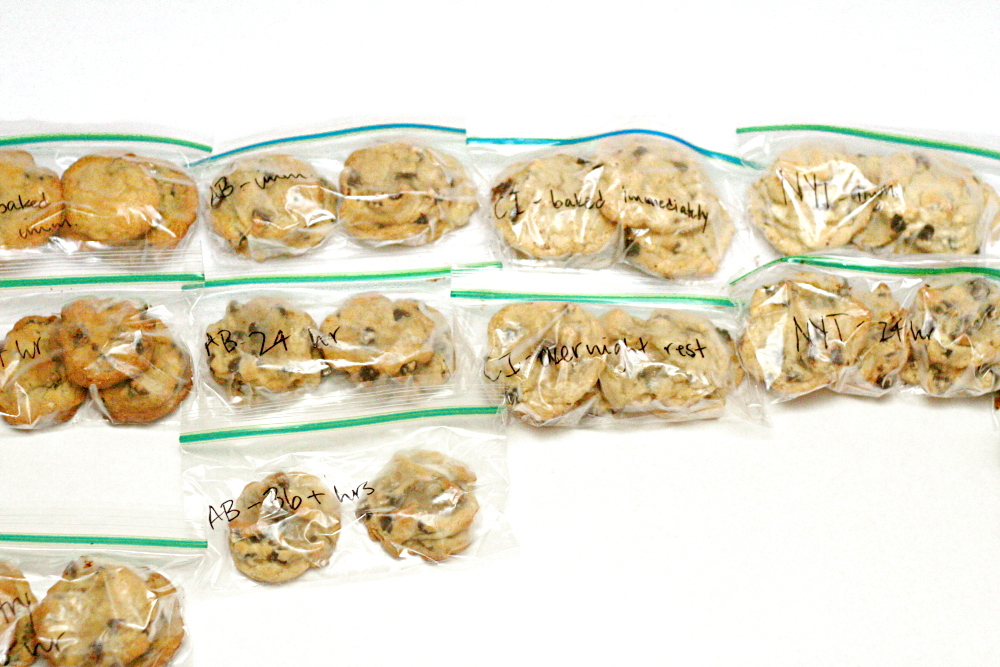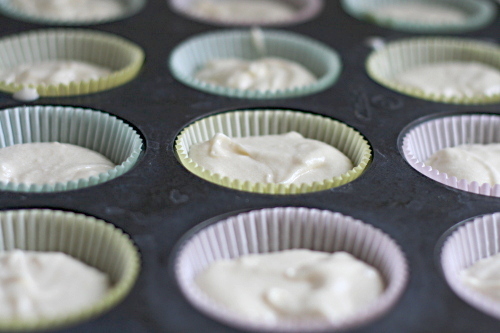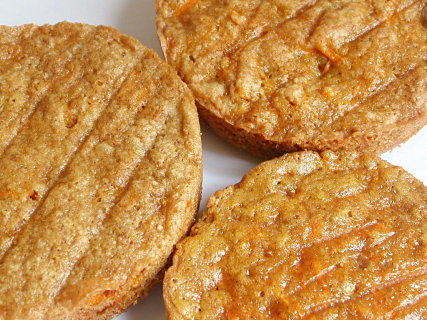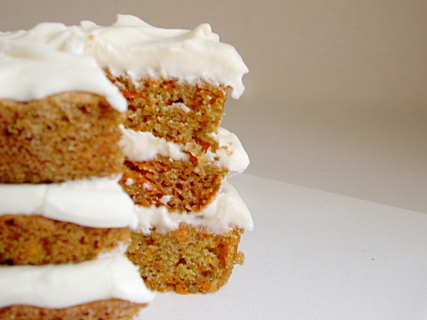It’s my blog’s first birthday. A year ago, I don’t think I knew how much having a food blog would improve my cooking. By reading other blogs, I’m constantly hearing about new methods, ingredients, and ideas. I also find that I’m forced to choose a variety of recipes from a variety of sources to keep my blog balanced. Taking photos of my food has encouraged me to think more about presentation. And being a member of Tuesdays with Dorie and the Daring Bakers has greatly increased my confidence in baking – not only because I’m baking so often, but I’m always making something new. There are far fewer tasks in the kitchen that intimidate me now compared to a year ago.
And I hear about other popular recipes. People often recommend Hershey’s Perfectly Chocolate Chocolate Cake when someone asks for a great chocolate cake recipe. I already have a favorite chocolate cake, and I had my doubts that the Hershey’s one could live up to it, especially because it uses cocoa as the only source of chocolate, plus it calls for oil instead of butter. Of course the only way to really figure out which is best is to eat them side by side.
 left – Hershey’s; right – Cooks Illustrated
left – Hershey’s; right – Cooks Illustrated
Hershey’s Cake is certainly easier to make. The dry ingredients are mixed, some wet ingredients are added, the batter is beaten for a couple of minutes, and then boiling water is stirred in. The result was a very liquidy batter. It was weird. The Cooks Illustrated recipe is a little more complicated, but isn’t by any means difficult.
The cakes tasted surprisingly similar. Hershey’s is a little sweeter, but CI’s has a subtly stronger chocolate flavor. The textural differences were more noticeable. The Hershey’s cake had a crust on the top (and I pretty much guarantee that I didn’t overbake it), which I didn’t care for. Cooks Illustrated’s cake had a more even texture, and it was lighter and fluffy. You can see in the picture above that the Hershey’s cake is much denser, especially on the bottom. Both cakes were moist, but I think the Hershey’s cake was more so.
The difference between the two cakes wasn’t as dramatic as I was expecting. Both were good, although I’ll stick to the Cooks Illustrated recipe. Both make for a good blog birthday cake!
I’m adding a “One Year Ago” feature, copied straight from Smitten Kitchen. It seems like a great reminder for old recipes that are too good to be forgotten.
One year ago: Cream Cheese Chocolate Chip Cookies
For Cooks Illustrated’s Old-Fashioned Chocolate Layer Cake, click here.
Hershey’s “Perfectly Chocolate” Chocolate Cake (from Hershey’s Chocolate)
2 cups sugar
1¾ cups all-purpose flour
¾ cup Hershey’s cocoa
1½ teaspoons baking powder
1½ teaspoons baking soda
1 teaspoon salt
2 eggs
1 cup milk
½ cup vegetable oil
2 teaspoons vanilla extract
1 cup boiling water
1. Heat oven to 350F. Grease and flour two 9-inch round baking pans.
2. Stir together sugar, flour, cocoa, baking powder, baking soda and salt in large bowl. Add eggs, milk, oil and vanilla; beat on medium speed of mixer 2 minutes. Stir in boiling water (batter will be thin). Pour batter into prepared pans.
3. Bake 30 to 35 minutes or until wooden pick inserted in center comes out clean. Cool 10 minutes; remove from pans to wire racks. Cool completely.














































